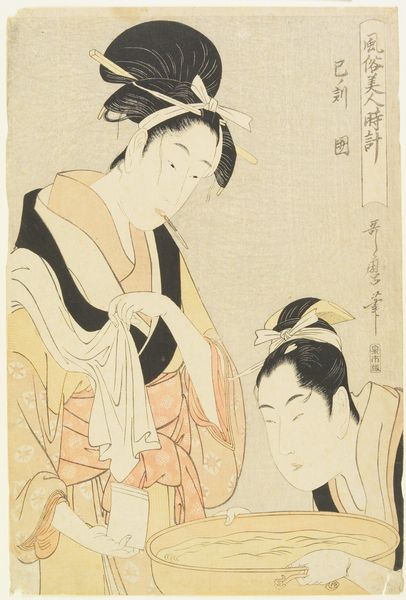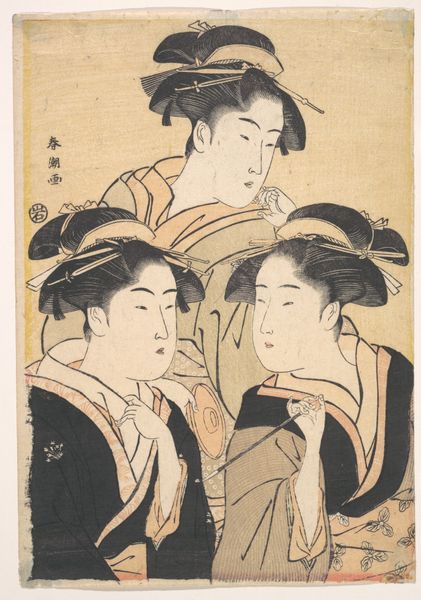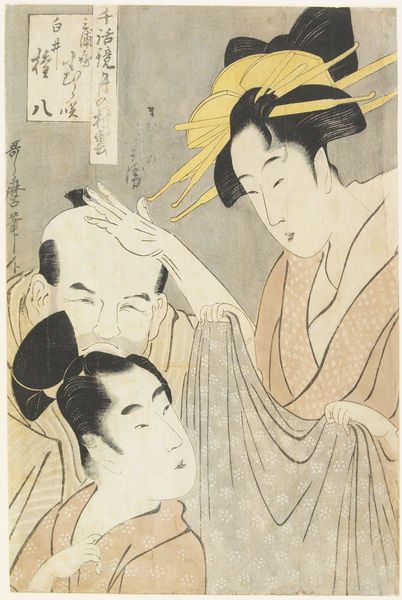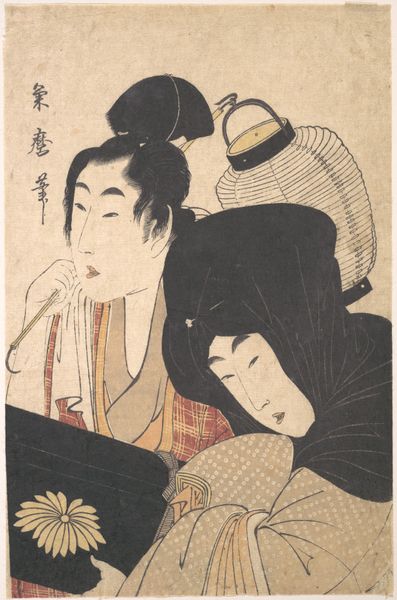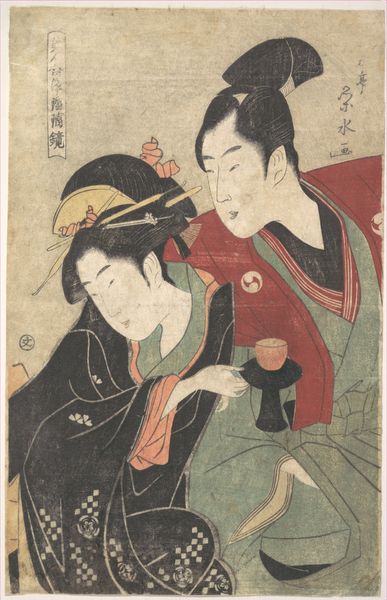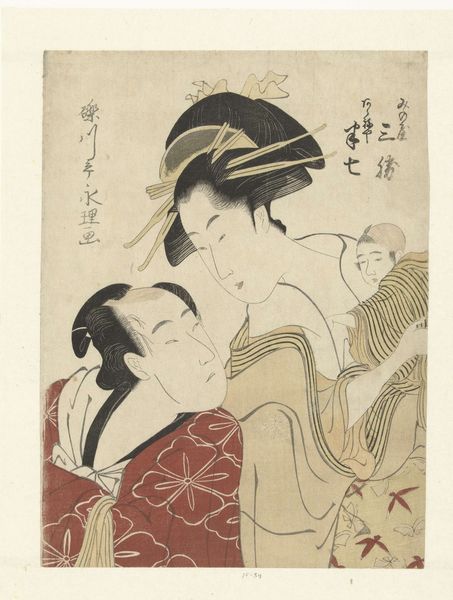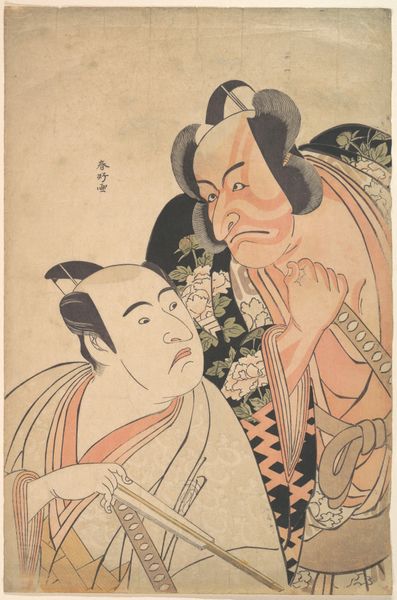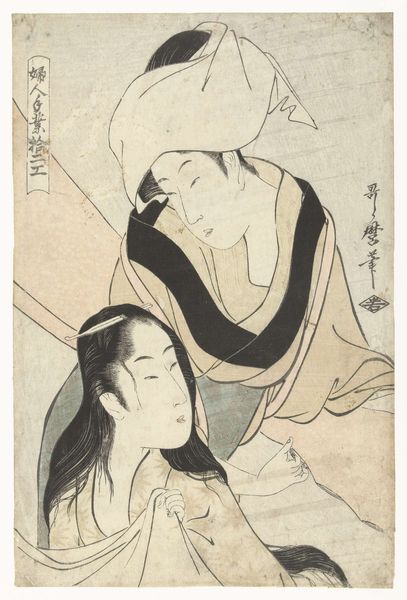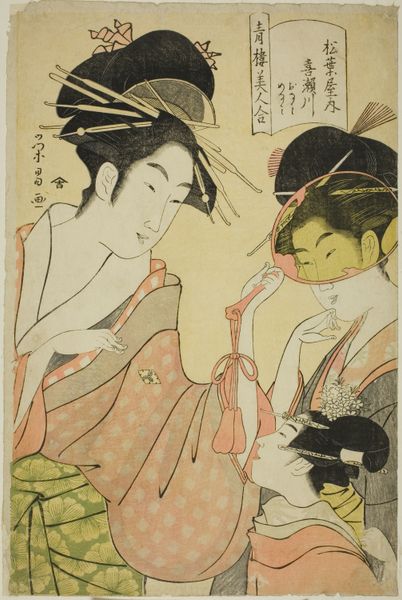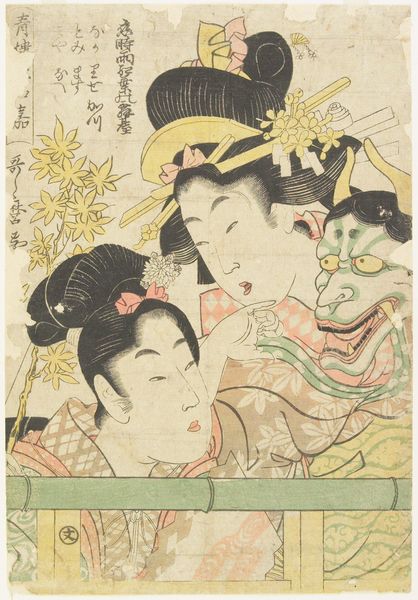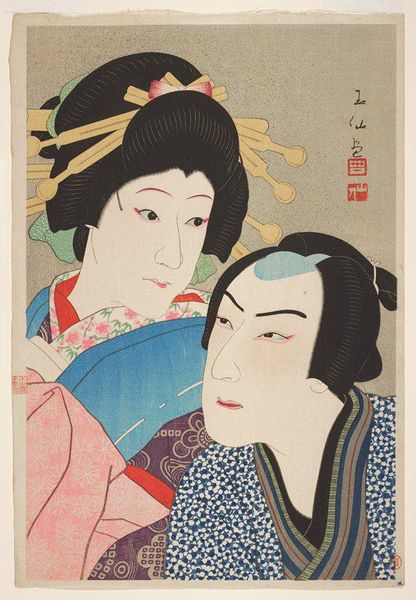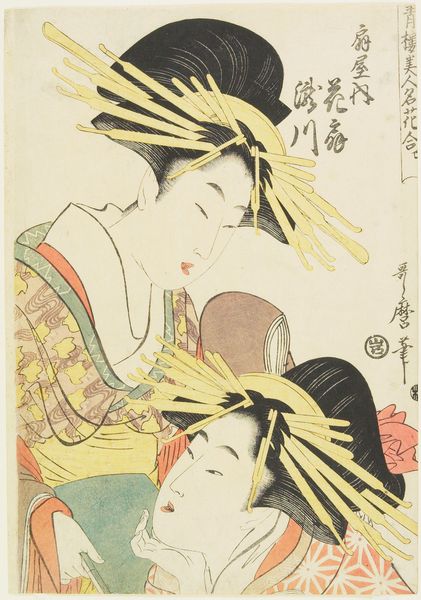
print, ink, woodblock-print
#
portrait
# print
#
ukiyo-e
#
japan
#
figuration
#
ink
#
woodblock-print
Dimensions: 14 3/4 × 10 in. (37.4 × 25.4 cm) (image, sheet, ōban)
Copyright: Public Domain
Editor: Here we have Kitagawa Utamaro’s woodblock print, "The Prostitute Agemaki," from around 1798 to 1800. The figures, especially Agemaki, seem almost to float on the paper. How do you see this piece through a more critical lens? Curator: Well, focusing on the materiality, consider the woodblock printing process itself. The labor involved in carving the blocks, the types of inks used, the specific paper selected – these weren't neutral choices. They were deeply entwined with the commercial and social world of Edo period Japan. Ukiyo-e prints like this weren't just art; they were commodities produced and consumed within a specific economic framework. How does recognizing the means of production affect your view? Editor: It definitely shifts my perspective. I hadn’t thought about the process so much, but knowing that it was commercial art makes me think about the intended audience, not just the artistic value. Curator: Exactly! And the depiction of Agemaki, a high-ranking courtesan, is also part of this commodity exchange. Consider how her image was crafted and consumed by a male audience. Think about the societal pressures placed on women involved in this economy, and the implications of reproducing her image. This isn’t just a beautiful print; it's a window into a complex system of labor, value, and representation. Where does the labor of the female body begin and end here? Editor: That makes me consider the whole industry surrounding women like Agemaki, not just her beauty but also the circumstances around her being represented this way, who was able to own that print and control it, almost possessing her. It’s a lot more complex than I originally thought. Curator: Precisely. And Utamaro’s choices—his mastery of line, color, composition—served to enhance the desirability and marketability of his subjects. Understanding the material conditions of its creation unveils this print's complex social reality. Editor: Seeing how the production process and social context intertwine has really changed how I view Ukiyo-e. Thank you.
Comments
minneapolisinstituteofart almost 2 years ago
⋮
The game played here is kazu-ken, a numbers game that originated in China. In this game, players make numbers from zero to five with their right hands, while predicting and then calling out the combined number from all players. The loser has to drink a cup of sake. This is a visual parody of the Kabuki play Sukeroku’s Affinity for Edo Cherry Blossoms (Sukeroku yukari no Edo zakura), but none of the three figures is a Kabuki actor. The story of the play centers on the love affair between the prostitute Agemaki and the dashing dandy Sukeroku, who is playing with his rival Ikyū (left).
Join the conversation
Join millions of artists and users on Artera today and experience the ultimate creative platform.
